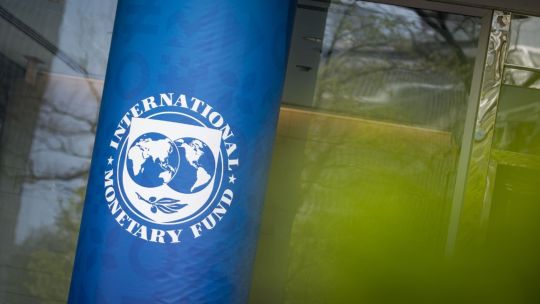
The world economy will keep weakening and remains vulnerable to trade shocks even though it is showing some resilience to Donald Trump’s tariffs, the International Monetary Fund said.
The Washington-based lender, updating its forecasts on Tuesday, sees global growth decelerating to 3 percent in 2025 from 3.3 percent last year amid disruption from the US president’s attempts to rewire commerce. The projections are slightly better than those in April, but largely reflect distortions such as front-loading in anticipation of tariffs.
“While the trade shock could turn out to be less severe than initially feared, it is still sizable, and evidence is mounting that it is hurting the global economy,” IMF Chief Economist Pierre-Olivier Gourinchas told reporters. “The current trade environment remains precarious.”
The assessment depicts a backdrop replete with storm clouds ranging from possible unravelling of trade deals, the weight of uncertainty bearing on investment, geopolitical tensions, high public debt and mounting US inflation pressures. Officials suggested that the world economy is unlikely to shrug off 2025 as just another volatile year.
“Global growth is expected to decelerate, with apparent resilience due to trade-related distortions waning,” the IMF said. “Even if tariff rates do not change relative to what is assumed in the baseline and no new protectionist measures are introduced, elevated trade policy uncertainty could start weighing more heavily on activity.”
The upgrade for growth this year was explained by improved financial conditions due to a weaker dollar, lower average effective US tariff rates than announced in April and the positive impact of businesses attempting to front-run import levies in the first quarter.
But the prevailing uncertainty is lingering. Even where deals have been struck, such as with the European Union or Japan, questions over details remain, along with the possibility of a change of heart by Trump. For 2026, growth will pick up only marginally, to 3.1 percent.
On the US, officials raised their GDP outlook for 2025 by 0.1 percentage point to 1.9 percent. That improvement masks private demand cooling faster than expected, and weaker immigration, the IMF said. Meanwhile expansion should pick up slightly to 2 percent in 2026 as tax incentives for corporate investment from Trump’s “one big beautiful bill” kick in.
Officials observed tentative evidence that higher tariffs and a weaker dollar are stoking US consumer prices in some import-sensitive categories. As that impact broadens, inflation will probably be hit more severely in the second half, and is seen staying above the Federal Reserve’s 2-percent target also in 2026.
By contrast, consumer-price growth elsewhere is expected to be more subdued as economies grapple with the demand shock inflicted by US tariffs.
For the euro area, the IMF raised its projection for expansion this year to 1% while keeping its forecast for 2026 unchanged at 1.2 percent. The upgrade from April amounted to 0.2 percentage point and is partly due to pharmaceutical exports from Ireland.
The IMF report did not touch on the effect of Trump’s announced trade deal this week with the European Union, which will impose a 15-percent levy on almost all imports, including cars. Bloomberg Economics estimates the impact will be a 0.4-percent hit to euro-area output over the next two to three years.
China’s improved trade terms with the US compared to three months ago are reflected in the IMF projections, however. It raised its 2025 outlook for the country by 0.8 percentage point to 4.8 percent, noting the lower levies and stronger-than-expected activity in the first half.
As usual, the IMF emphasised the need for a more tranquil political and economic backdrop, and warned against bloated public finances.
“Policies need to bring confidence, predictability, and sustainability by calming tensions, preserving price and financial stability, restoring fiscal buffers, and implementing much-needed structural reforms,” the IMF said. “The ambiguous and volatile landscape also requires clear and consistent messaging from central banks and the protection of central bank independence, not only in legal terms, but also in practice.”
That latter comment is all the more salient at a time when Fed Chair Jerome Powell faces constant attacks by Trump for avoiding rate cuts.
The IMF predicts the Fed and the Bank of England will lower borrowing costs in the second half of 2025, though at varying speeds. The European Central Bank’s policy rate is expected to remain unchanged, while the Bank of Japan is seen raising rates gradually.
TIMES/BLOOMBERG





